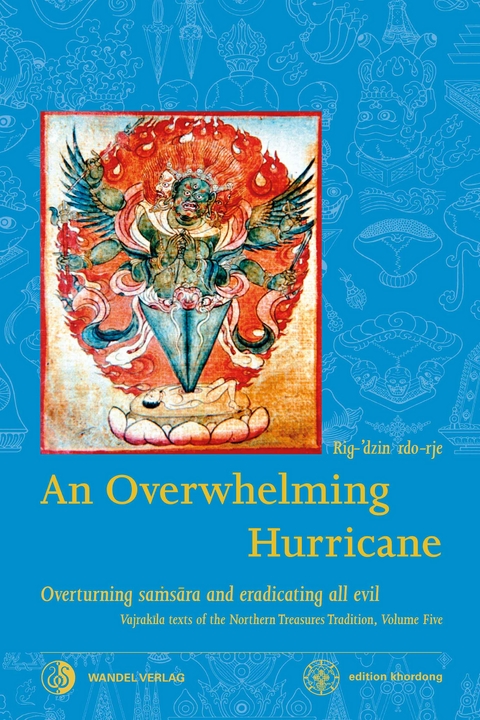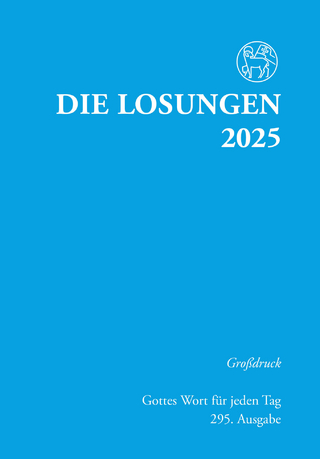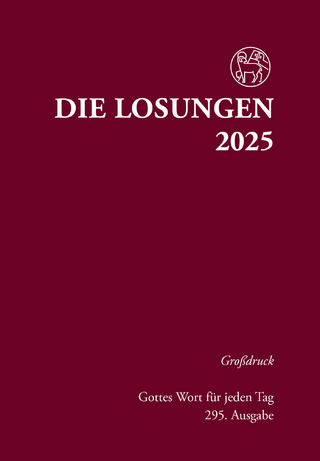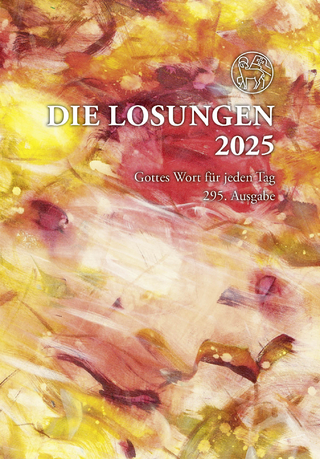An Overwhelming Hurricane
Wandel edition khordong (Verlag)
978-3-942380-28-7 (ISBN)
(1) The first of these texts, entitled The Threefold Firebrand, is a remarkable personal letter written by Guru Padma and addressed to the future revealer of the Byang-gter, dNgos-grub rgyal-mtshan. In the manner of a secret biography of the gter ston, Padma states that in ancient times he utilised the practice of Vajrakīla to destroy a colony of rāksasa demons dwelling upon a Dark Red Rocky Mountain in India. The relic bones of those slaughtered demons were imbued with great blessings and the mountain became known as a sacred power place of Vajrakīla. This ‘secret biography’ then traces the lineage of subsequent rebirths of one of those sets of bones until it finally arose in Tibet in the form of the treasure revealer rGod-ldem-can. The signs and omens of this profound connection between the guru and the gter ston are described, and rGod-ldem-can is given instructions concerning his Dharma activities and the manner in which he should conduct himself in the world. This amazing personal testament addressed to Rig-ʼdzin rGod-ldem also holds great value for ourselves as non-monastic followers of Padma’s treasure tradition because it contains specific instructions concerning how one should live as a hidden yogin, adopting an unassuming lifestyle.
(2) The Steps for the Attainment of Siddhi speaks of innate natural awareness as pervading the dharmadhātu, and then goes on to describe the lineage through which this understanding, together with the means for its realisation, were absorbed by the three kāya of awakened buddhahood and subsequently transmitted to the human realm.
(3) As for the Tantra of the Secret Embodiment of the Mind of Vajrakīla, this text offers a new interpretation of the manner in which the violent doctrines of wrath arose in order to overthrow the black demon Mātraṅgara Rudra, and how that demon became the great protector Mahākāla. As the story unfolds, we learn of the non-dual interdependence of the guru, deva, ḍākinī and protector and the tantric practices associated with each.
(4) The Praise and Invocation that follows is derived from the Byang-gter cycle of the multicoloured deity, in which not only the chief deity has three faces and six arms but the ten krodharāja of his retinue, too, are endowed with three faces and six arms. This text includes rare verses of great interest dedicated to the twelve goddesses who play vitally active roles in the wrathful rites of the Vajrakīla maṇḍala.
(5) The Daily Dedication of Bali Cakes, a small text by the Yol-mo sprul-sku Śākya bzang-po, describes the manner in which the yogin should present scattered offerings (bali) to the maṇḍala protectors on a regular basis.
(6) And when it comes to the affairs of daily life, outside of the retreat, in order that the continuum of religious practice be maintained, we have here a collection of Eight Teachings on the Yoga of Everyday Life, garnered from the Kīlavidyottama tantra for the benefit of yogins so that, from the moment of waking up in the morning to the time of going to sleep at night, every step that is taken never strays beyonds the limitless infinitude of the perfect maṇḍala.
(7) When preparing the Extensive Feast Offering to the Assembled Deities of the Vajrakīla Maṇḍala, the yogin transforms the skull bowl containing his food into the palace of skulls which is the residence of the assembly of maṇḍala deities. The meditation to achieve this echoes the steps through which the divine maṇḍala is recreated in the generation stage of Vajrakīla yoga. This practice, however, is much more a yoga of the completion stage in which the above eight teachings on the yoga of everyday life have now become so familiar that the adept finds himself holding the complete maṇḍala palace and retinue of deities in the palm of his hand.
(8, 9, 10) The trilogy of texts known as the Lamp of the White Path, Iron Cloak of Obedient Servants, and Poisonous Black Razor, focuses upon the means of controlling those twelve unruly goddesses mentioned above, at the end of the fourth text. Although bound under oath by Padmasambhava in Nepal, the unswerving loyalty and obedience of these twelve wild females cannot be presupposed or relied upon, even by yogins of pure samaya. These texts, from the cycle of the Greater than Great (Mahottara) Vajrakīla, give detailed instructions for addressing this problem.
(11) The Rite of Summoning the Messengers, derived from the Razor Cycle of Vajrakīla, reminds these oath-bound Mother goddesses of their former vows and commands them to drag forth a comprehensive list of enemies and obstructors which are then liberated by the ten krodharāja of the saṁbhogakāya maṇḍala. The juxtaposition of this text with the above trilogy well illustrates the different approaches taken by the Vajrakīla cycles of the Black Razor and the Greater than Great.
(12) Instructions on Suppression, Burning and Hurling, the three rites of ultimate ferocity explained in the Drag po rang byung rang shar tantra, are here presented as a group of special instructions taught to the ḍākinī Ye-shes mtsho-rgyal by Padmasambhava of Oḍḍiyāna. This final act consigns the enemy to the dark realm of the Lord of Death from which there is no escape.
(13, 14) The next texts in our volume are a pair called The Vajrakīla Razor of Life and Clarification of the Razor of Life. Regarded as sacred and kept hidden for centuries, it is recorded that the king of Tibet himself used to wear these precious esoteric texts as an amulet, wrapped up in fine Chinese silk and always carried on his person together with a consecrated kīla.
(15) The advanced Ritual Practice of Mahottara Vajrakumāra assumes a great deal of understanding and experience on the part of practitioner. This illusory dance of appearance and emptiness follows the general pattern of a Vajrakīla rite but with a marked preponderance in this text of the inner and secret aspects over the outer, and, even within the generation stage of the rite we see an increase in the terminology of the great completion.
(16, 17) Further, in order that the wind of mantra recitation may be fully empowered to arouse the fire of deep concentration, this volume includes two short upadeśa texts dealing with the Fierce Recitation and the Dharmatā Recitation of Vajrakīla. Pith instructions that go straight to the main point, this pair of special teachings describe in direct and simple terms the effect to be achieved by the rays of light radiating from the mantra, and the significance of the mantra syllables themselves.
The next group of texts in this volume focus their attention upon the material world: (18) The Fundamentals of all Vajrakīla Activities describes a mantra wheel to be inscribed upon the effigy of the enemy in order to direct the Mother Goddesses and butchers to the fulfilment of their bloody tasks. (19) The Protective Cakra That Repels the Eight Classes of Demons is a skilful method that may be used in the production of an outer, inner or secret protective amulet, or it may be used for the consecration of a statue or other sacred object. (20) The Eighteen Powerful Substances for the Collected Rituals of the Kīla Razor is a bizarre compendium of magical rituals (be’u ʼbum), presented as a secret teaching that was mysteriously obtained and carefully guarded by Guru Padma so that the original true doctrines of the Buddhist Dharma may be enabled to flourish. Finally, (21) The Vajrakīla Rite to Turn Away Hailstones brings us back to more familiar territory in which the yogin is instructed to arise in the form of the deity and act from the standpoint of divine pride. Creating an overwhelming hurricane of fire and wind, the icy hailstones are melted and the stormclouds dispersed for the benefit of all. These are the mundane rites for the benefit of the world.
(22) In the Daily Practice of the Vajrakīla Wrathful Mantra, rightly described as “the quintessential practice of the treasures of Lha-brag”, all the elements of ritual practice are strung together like a necklace of pearls so as to provide the yogin with a very clear overview of the higher rites that lead to enlightenment.
(23) To these teachings are now added A Commentary on the Practice of Fierce Mantra. Really a ‘further commentary’ not solely confined to commenting upon the previous text, here we find notes on the DHADHI mantra and the mantra wheel to be superimposed upon the effigy of one’s enemy, etc.
(24) An Exhortation of Blessings is a joyful and poetic invocation of the guru in his various guises from a series of fearful charnel grounds, each one of which is described as “a place of loathsome disgust” and associated with a renowned Buddhist pilgrimage site, which it calls “a delightful holy place”. Such paradoxical contrasts are familiar to us in the outer and inner descriptions of the Vajrakīla maṇḍala, the blessings of which are now called forth.
(25) This volume concludes with A brief commentary piercing the essence of the four kīla entitled Heruka’s Secret Roar, a small text containing the teachings of O-rgyan bstan-ʼphel which bring us back to our basic ground, clarifying and consolidating all that we have learned from previous study and all that we have achieved through meditation so that the path may lead unerringly to the supreme result for the sake of all living beings.
With humble devotion, this series of Vajrakīla Texts of the Northern Treasures Tradition is dedicated to my guru, ʼKhor-gdong gter-chen sprul-sku ʼchi-med rig-ʼdzin bla-ma, together with a sincere prayer that it be of benefit to all sentient beings. May it be well received by yogins and yoginīs of good character! May virtue abound!
Als einer von Chhimed Rigdzin Rinpoches älteren Schülern wird Martin Boord bereits vielen innerhalb der Khordong-Sangha bekannt sein. Nachdem er den Lama während einer Pilgerreise durch Indien im Jahre 1973 traf, lud Martin einige Jahre später C. R. Lama nach Großbritannien ein, um die Übertragung des Byangter Phurpa (Vajrakila des Nördlichen Schatzes) in Europa zu beginnen. Martin hat viele Belehrungen von Rinpoche erhalten, doch den Schwerpunkt bildeten die Vajrakila- und Schützerbelehrungen. Dreimal bekam er Belehrungen zu Vajrakila und übersetzte einen langen Praxistext. Das Thema des Byangter Phurpa nahm er mit zur Universität und absolvierte dort den Bachelor of Arts (BA) in „Religious Studies (Buddhism)“. Über die Gottheit Vajrakila promovierte er zum Dr. phil. an der „School of oriental and african study“ der Londoner Universität („The Cult of the Deity Vajrakila“, Tring, 1993, überarbeitet und ergänzt erhältlich als Gathering the Elements, Wandel Verlag, 2013). Als Martin Boord 1967 das erste mal dem tibetischen Buddhismus im Katmandutal begegnete, war er sehr beeindruckt von der Großartigkeit und Schönheit des Tantrayana und des tibetischen Buddhismus. Er begann mit seinem formellen Unterricht in Dharamsala an der Tibetischen Bibliothek, indem er den Sutrapfad für 2 Jahre studierte, obwohl er bereits an den Belehrungen von Padmasambhava interessiert war. Dabei traf er seinen ersten Lehrer, Lama Khandrul Yeshe Dorje, bekannt als der „Regenmacher“, ein Nyingma Lama. Martin lebte mit ihm als sein Gehilfe und Adjutant für einige Jahre und blieb für insgesamt 8 Jahre in Indien, hauptsächlich an tibetischen Orten mit Tibetanern. Er studierte ebenso Sanskrit um das Dharma in seiner ursprünglichen Form kennenzulernen. Ein weiterer wichtiger Lehrer von dem Martin wichtige Belehrungen erhielt war S.H. Dudjom Rinpoche, das Oberhaupt der Nyingma Schule des tibetischen Buddhismus. Martin traf S.H. Chhimed Rigdzin zum ersten mal, als er 1973 mit Lama Khandrul Yeshe Dorje auf Pilgerreise in Sarnath war. Zurück in England ließ er sich 1974 in Cornwall nieder und gründete mit seiner Frau ein kleines Dharmazentrum und lud 1979/80 Chhimed Rigdzin Rinpoche zu seinem ersten Besuch nach England ein. Daraufhin folgte Martin Rinpoche nach Indien zur Universität in Shantiniketan, bekannt durch Rabindrad Tagore, wo Martin sich dem Übersetzerteam um Rinpoche für einige Zeit anschloß. Wieder zurück in England und nach einem lockeren Drei-Jahres-Retreat in Schottland fuhr er an der Universität von London mit seinem Studium des Buddhismus fort und zog nach dem PHD (Doktorgrad) nach Oxford um. Martin Boord lebte lange Oxford und widmet sich vor allem der Übersetzung tantrischer Texte zur Visualisationsgottheit Vajrakila. Seine erste Veröffenltichung, die bei edition khordong erschien, ist seine mehrere Jahre dauernden Übersetzung des Phur ‚grel ‚bum nag, die Schwarzen 100.000 Worte, einem Text der Kamatradition. Es handelt sich dabei um einen Bericht von einem Vajrakila Retreat, das Padmasambhava mit Vimalamitra und Shilamanju in Nepal im 8. Jahrhundert abgehalten haben. Dieser Bericht wurde von Padmasambhava an die Yogini Yeshe Tsogyal gegeben. Er ist der bekannteste und meist respektierte Kommentar zu Vajrakila. Dieser Text ist nun zur englischsprachigen Veröffentlichung erhältlich. Weitere Informationen zum Buch: „A BOLT OF LIGHTNING FROM THE BLUE„. Martin Boord kam das erste mal im Jahre 1998 zu Belehrungen über Vajrakila nach Deutschland. Dort im Pfauenhof Retreat machte er uns mit der Geschichte und der Meditationspraxis von Vajrakila vertraut. 1999 begleitete er auf ähnliche Weise ein Vajrakila Retreat mit S.H. Chhimed Rigdzin Rinpoche in Berlin und ergänzte es durch seine genauen Erläuterungen. Nun wird Martin Boord in einigen Ländern Europas regelmäßig zu Belehrungen des Vajrayana eingeladen, so auch nach Österreich und Schweden und begleitete Rinpoche auf einigen Stationen in Europa.
| Erscheinungsdatum | 05.03.2020 |
|---|---|
| Reihe/Serie | edition khordong ; 28 |
| Khordong Commentary Series ; 15 | Vajrakila texts of the Northern Treasures Tradition ; 5 |
| Zusatzinfo | line drawings by Nick Dudka of Vajra Youth - Mahottara Vajrakumāra (Che-mchog rdo-rje gzhon-nu), the Excellent Black One - Mahākāla (Legs-ldan nag-po), Vajra Sādhu (rDo-rje legs-pa) |
| Verlagsort | Berlin |
| Sprache | englisch; Tibetan |
| Maße | 150 x 220 mm |
| Gewicht | 560 g |
| Einbandart | gebunden |
| Themenwelt | Geisteswissenschaften ► Philosophie ► Östliche Philosophie |
| Geisteswissenschaften ► Religion / Theologie ► Buddhismus | |
| Religion / Theologie ► Christentum ► Gebete / Lieder / Meditationen | |
| Schlagworte | 5. Dalai Lama • Black Razor Vajraki la • Black Razor Vajrakīla • Byangter • Dorje Phurba • Empowerment Ritual • Godemchen • Homa • Kilaya • Mahakala • Mahākāla • Mahottaraki la • Mahottarakīla • Nördliche Schätze • Northern Treasures • Nyingma • Nyingmapa • Padma Tinley • Rigdzin Godem • Rig-'dzin padma 'phrin-las • Rig-’dzin padma ’phrin-las • Rig-'dzin rgod-ldem • Rig-’dzin rgod-ldem • Tantra • Terma • Tibetan tantra • Tibetisches Tantra • Vajraki la • Vajrakila • Vajrakīla • Vajrakilaya • Vajrakumara • Vajrakumāra • water initiation |
| ISBN-10 | 3-942380-28-5 / 3942380285 |
| ISBN-13 | 978-3-942380-28-7 / 9783942380287 |
| Zustand | Neuware |
| Haben Sie eine Frage zum Produkt? |
aus dem Bereich




